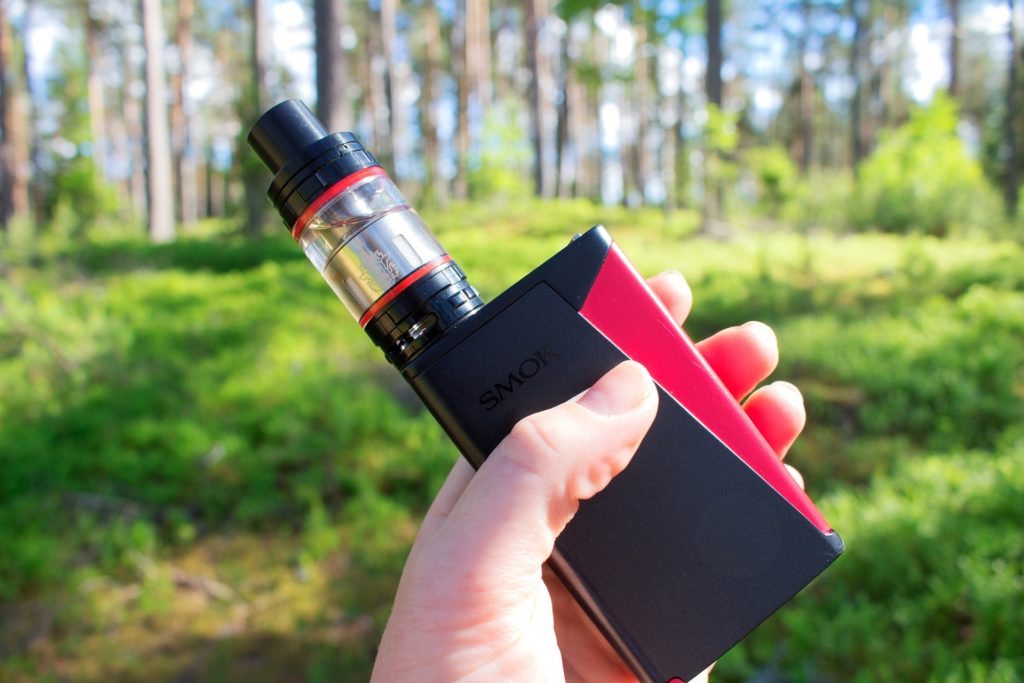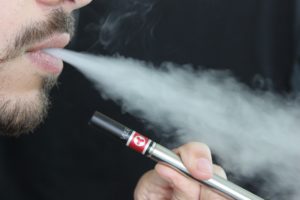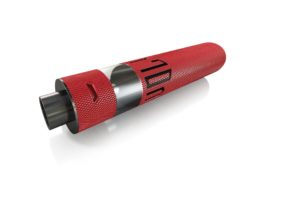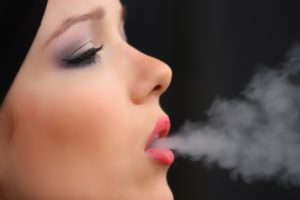
Dr. Mark Gold’s Research You Can Use
Vaporization has emerged an increasingly popular method for consuming cannabis. As more and more states continue to legalize cannabis for not just medicinal but recreational purposes as well, underage users are increasing. Teens vaping nicotine or cannabis are at greater risk for addiction and other associated consequences.
A recent study, published in JAMA Network Open, assessed the influence exerted by vaporized marijuana on infrequent cannabis users and discovered that pot inhaled through vape device is capable of producing a more powerful high, most often accompanied with more severe side effects, than when smoked.
Juul is the rule – An emerging vaping trend
 Policies and regulations surrounding cannabis consumption have been drastically evolving throughout developed countries. Presently, cannabis use has been legalized in 30 American states for medicinal purposes, of which nine have also permitted it to be used for recreational purposes. Several countries who are part of the European Union have also dramatically reformed cannabis use in their regions.
Policies and regulations surrounding cannabis consumption have been drastically evolving throughout developed countries. Presently, cannabis use has been legalized in 30 American states for medicinal purposes, of which nine have also permitted it to be used for recreational purposes. Several countries who are part of the European Union have also dramatically reformed cannabis use in their regions.
Illicit sales and distributions continue alongside state-owned and run cannabis producers and retailers. In the face of current legalization of marijuana, a flourishing retail cannabis market has also emerged, increasing accessibility to cannabis and leading to the development of various unique cannabis products and formulations.
Similar to electronic cigarettes, Juul and assorted vaporizers have become the choice of consumption for many cannabis users. Vaporization has typically been marketed as “cool” and based on its ability to produce less toxic exposure compared to traditional smoking methods. Cannabis vaporizers heat dried cannabis or concentrated cannabis extracts to create an inhalable vapor.
A recent school-based survey discovered that as many as 1 in 11 users vaping marijuana, escalating health concerns regarding this increasingly popular trend. This roughly translates to 2 million U.S. middle and high school students.
Nearly 9 percent of students surveyed in 2016 said they used an e-cigarette device and vaping marijuana, as reported in the journal JAMA Pediatrics. That included one-third of those who ever used e-cigarettes.
Vaping accompanied by stronger side effects
The present study aimed to evaluate the acute dose effects of and compare the pharmacodynamics and pharmacokinetics of smoked and vaporized cannabis in healthy adults through the means of controlled administration methods.
This study took a step further than previous ones by examining multiple doses of THC across inhalation methods, recruiting participants with infrequent cannabis consumption patterns and including a pharmacodynamic test battery, comprising of subjective drug effects, cognitive and psychomotor performance, and vital signs.
Subjective drug effects were assessed with the Drug Effect Questionnaire, whereas cognitive and psychomotor performance was evaluated through a set of 3 computerized tasks, explicitly designed to be highly influenced by cannabis self-administration.
The double-blind, crossover study recruited 17 healthy adult participants, nine men, and eight women, with no cannabis use in the past month. Conducted from June 2016 to January 2017, the study consisted of 6 smoked and vaporized outpatient 10-minute experimental sessions with a week-long washout between sessions.
 All study volunteers completed three eight-and-a-half-hour sessions during which they smoked marijuana at three different THC doses (zero milligrams, 10 mg, and 25 mg) and three in which they were vaping marijuana at the predetermined doses.
All study volunteers completed three eight-and-a-half-hour sessions during which they smoked marijuana at three different THC doses (zero milligrams, 10 mg, and 25 mg) and three in which they were vaping marijuana at the predetermined doses.
Urine toxicology tests were carried out at screening and prior to each experimental session. Participants were required to test negative for all drug, including cannabis, before each session.
For both inhalation methods, mean peak variations for ratings of drug effect at the 10-mg and 25-mg doses were significantly higher than the placebo.
At the 10-mg dose, vaporized cannabis, compared with smoked cannabis, yielded higher mean ratings of drug effect, dry mouth, and irritated eyes, but lower ratings of vigorous and/or motivated drug effects.
At the 25-mg vaporized dose, the magnitude of changes for most drug effects, including those for paranoia, were substantially greater when cannabis was vaporized, than when smoked. Furthermore, greater impairment of cognitive and psychomotor skills was noted for vaporized cannabis as compared to that of the same amount of cannabis smoked. These deficits typically peaked between 30 and 60 minutes after cannabis administration and, in some instances, did not return to baseline for 6 to 8 hours.
Implications for future cannabis policies and regulation
Researchers at John Hopkins make a strong case by providing a comprehensive evaluation of the significant effects in relation to smoked and vaporized cannabis, at multiple TC doses. With increasing accessibility to cannabis and lower inhibitions regarding its consumption, individuals who are initiating cannabis use can easily access products that contain far greater amounts of cannabis, with higher THC concentration, than used in this study.
“More people are coming into cannabis dispensaries and using for the first time in a while or for the first time ever,” commented the study’s lead author, Tory Spindle, a postdoctoral research fellow at John Hopkins School of Medicine, while speaking with NBC News. “They should be aware that vaping will produce stronger effects. We found there was a fine line sometimes between a dose that produced the desired effects and one that was too strong.”
Several misconceptions regarding vaping can be and need to be clarified, the authors reiterated. Vaping marijuana can not only deliver a higher dose of the drug but is capable of producing an aerosol of ultrafine particles that can easily travel to the lungs and the brain. These findings are particularly important in the context of teens and young adolescents who are more likely to vape than smoke.
 The researchers also noted that THC was detectable in the blood samples up to four hours after using, even though the drug’s effects lasted five or six hours.
The researchers also noted that THC was detectable in the blood samples up to four hours after using, even though the drug’s effects lasted five or six hours.
John Hopkins researchers believe this suggests that blood testing may not be an accurate measure of determining if an individual is high or driving under the influence.
Even though the study involved a small sample and limited insight into the long-term effects of vaping, it stresses on further investigation into this avenue. These findings could potentially inform regulatory and clinical entities regarding cannabis accessibility, dosing guidelines, cannabis policy and regulation, procedures for detecting acute cannabis intoxication and education for cannabis users and non-users.
References:
1. https://jamanetwork.com/journals/jamanetworkopen/fullarticle/2716990
2. https://www.sciencenews.org/article/how-many-us-kids-are-vaping-marijuana
3. https://www.nbcnews.com/storyline/legal-pot/vaping-pot-more-powerful-smoking-it-study-finds-n942271
4. https://www.sciencedaily.com/releases/2018/12/181204131115.htm
About the Author:
 Mark S. Gold, M.D. served as Professor, the Donald Dizney Eminent Scholar, Distinguished Professor and Chair of Psychiatry from 1990-2014. Dr. Gold was the first Faculty from the College of Medicine to be selected as a University-wide Distinguished Alumni Professor and served as the 17th University of Florida’s Distinguished Alumni Professor.
Mark S. Gold, M.D. served as Professor, the Donald Dizney Eminent Scholar, Distinguished Professor and Chair of Psychiatry from 1990-2014. Dr. Gold was the first Faculty from the College of Medicine to be selected as a University-wide Distinguished Alumni Professor and served as the 17th University of Florida’s Distinguished Alumni Professor.
Learn more about Mark S. Gold, MD
About the Transcript Editor:
 A journalist and social media savvy content writer with extensive research, print and on-air interview skills, Sana Ahmed has previously worked as staff writer for a renowned rehabilitation institute, a content writer for a marketing agency, an editor for a business magazine and been an on-air news broadcaster.
A journalist and social media savvy content writer with extensive research, print and on-air interview skills, Sana Ahmed has previously worked as staff writer for a renowned rehabilitation institute, a content writer for a marketing agency, an editor for a business magazine and been an on-air news broadcaster.
Sana graduated with a Bachelors in Economics and Management from London School of Economics and began a career of research and writing right after. Her recent work has largely been focused upon mental health and addiction recovery.
The opinions and views of our guest contributors are shared to provide a broad perspective of addictions. These are not necessarily the views of Addiction Hope, but an effort to offer a discussion of various issues by different concerned individuals.
We at Addiction Hope understand that addictions result from multiple physical, emotional, environmental and genetic factors. If you or a loved one are suffering from an addiction, please know that there is hope for you, and seek immediate professional help.
Published on April 8, 2019
Reviewed by Jacquelyn Ekern, MS, LPC on April 8, 2019
Published on AddictionHope.com
